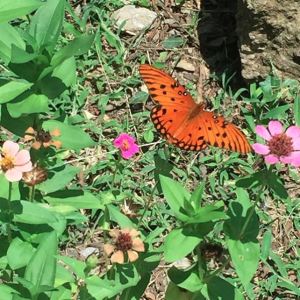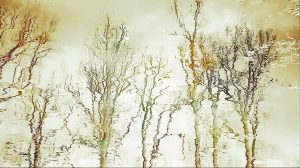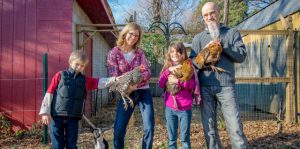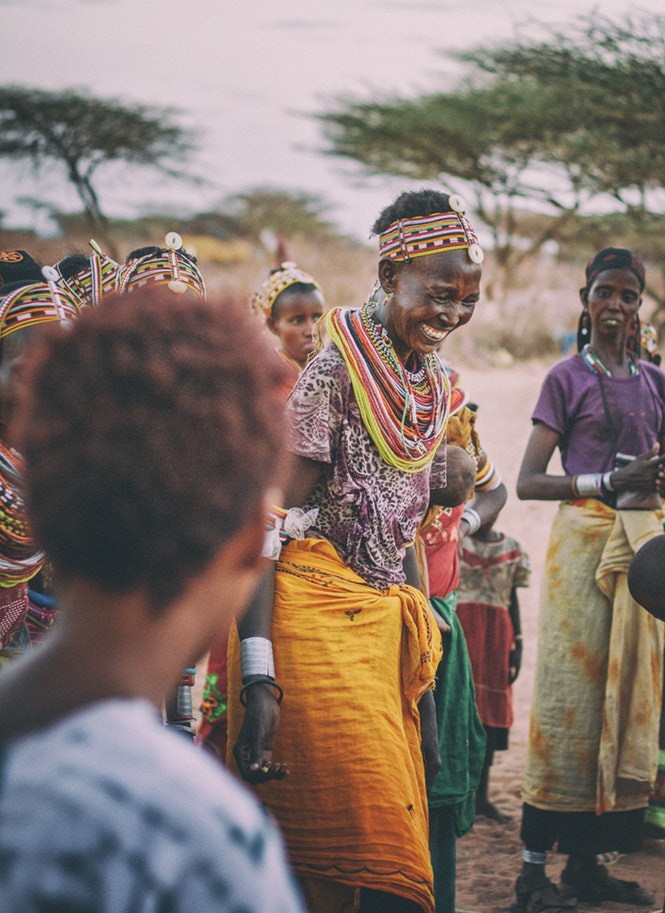by Lilly Lewin
Last week while leading a sabbath retreat, I participated in an art meditation where four people prayed around one piece of board core form board using colorful chalk pastels. My host for the weekend led the meditation and after each prayer prompt, we would draw in response. Then we would turn the board a quarter turn and draw again, adding to the art prayer already created by our neighbor. During one turn of the board, I noticed that my neighbor had drawn a cocoon on the stem of a rose. Just the chrysalis , the cocoon, not a butterfly and no caterpillar or butterfly in sight! Most of the images on our board were abstract designs and a few words or phrases so the image of the chrysalis stood out. God reminded me about the green goo stage of creation.
I first heard about the green goo stage in Art Class in California. My teacher Karen Ingalls told us that the caterpillar goes in his cocoon but first he must actually decompose into green goo before he transforms into a beautiful butterfly.
Karen told us that often when we paint we’d get to the green goo stage. That time in the painting when you are so frustrated that you just want to throw the painting in the bin or trash it & paint over your painting and just start all over! You’ve been working and working and you just can’t quite get it to look like you want it to… Karen said that is when you are in the green goo! And we have to go through the green goo stage to get to the good stuff, to get to the beautiful creation on the other side.
You have to stick with the painting, not give up or paint over it. You must go through the green goo stage to get to the beautiful creation on the others side! And usually when you’ve reached the green goo stage you are getting really close to seeing that butterfly!
This is how my life has felt lately, like a pile of green goo. Things have not felt like they are going together well and there is a lack of clarity and a lot of little frustrations that have added up to big ones. Jesus used the art meditation with the drawing of the cocoon to remind me that i am just living in the green goo stage right now. Jesus tapped me on the shoulder and reminded me that I don’t need to be discouraged or give up or drop everything and run ahead like i so often do! Just know I am in the green goo!
We so often get to the place where we cannot see what is next! We don’t understand what God is up to or we cannot see even what the next step should be. Sometimes there are too many choices, other times their are not enough or it doesn’t appear there are any! That is the green goo!
That’s when God is at work transforming us into the butterfly. Usually it’s uncomfortable, change always is! And transformation always is. Because you are morphing into something new!
And mostly we don’t like it, and we just want to chuck everything in the bin and run away.
But like the caterpillar, we need to know that there is something on the other side. We need to know that we don’t end in green goo. God is transforming us and our lives into something beautiful. We just cannot see it yet.

How about you? What season are you in now? Are you crawling along nicely like a caterpillar or soaring like a butterfly? Or are you just in the middle of the transformational, sometimes totally frustrating, green goo stage?
Take some time to talk to Jesus about this. Allow Jesus to show you where you are and what he is up to in your life. Take time this week to notice the caterpillars, the butterflies and even a cocoon! Let these things remind you that God is doing things in your life…even in the green goo!
And check out the video on what really happens to the caterpillar!

By Keren Dibbens-Wyatt —
“These blasted raindrops!” said the rose. “Why do they have to keep falling on me?” She grumbled and grunted her way through the day, shaking her petalled mane every time a heavenly drip or a dewdrop had the audacity to rest on her smooth perfect pinkness.
“My head is not a waiting room or a hotel!” she screeched, “There’s nothing to see here, move along! I want to be dry and light and not weighed down by all this water!”
That afternoon a famous photographer came to the rose garden, having heard of its beauty, and the perfect rose shimmied her shoulders and prepared herself for international renown and a place on the cover of Top Garden magazine. But the photographer walked all around the garden and selected what the rose considered to be a far more straggly and inferior rose bush to focus on.
“But these are our best blooms,” said the gardener, indicating the bush on which the first rose was by far the most splendid, and scratching her head, “Why’ve you set up over there?” The photographer replied,
“These are holding the raindrops just beautifully and they glimmer like jewels, especially if I catch the light with my angle and lens just so,” and he showed the gardener through his viewfinder.
“Wow,” she said, “That is amazing, like little rainbows sitting on the petals.”
“Exactly,” he replied. “Plus perfection can be overrated you know. The perfect photograph is usually of something imperfect. Flawlessness can be boring and unemotive, it doesn’t necessarily engage.” The gardener nodded, having loved sawfly and caterpillars just as much as she had blooms and butterflies.
“Like the lawn?” she ventured, “I prefer moss and buttercups to endless stripes.”
“Exactly,” he smiled, and continued with his work. And the rose, who had heard all of this, stopped shaking her head when the rain fell, and squinted her eyes just a little, trying to see the jewels and rainbows in the drops, happy from then on to wear a watery tiara, whether it got her on the cover of a magazine or not.
By Lynne M. Baab —
Stress is ramping up. I use the term “new/old” to describe the stress people today deal with. “Old” sources of stress include all sorts of stressors that have always been around, such as illness, grief, unemployment, and family discord. New sources of stress include political polarization, the tyranny of smart phones, and the rising cost of housing and education. Understanding the new/old sources of stress that people face today is a key skill for pastoral care.
 In my previous post I wrote about trends in pastoral care, and in the post before that, I introduced the idea that our understanding of Christian pastoral care has changed in recent years. These ideas come from my new book, Nurturing Hope: Christian Pastoral Care in the Twenty-First Century.
In my previous post I wrote about trends in pastoral care, and in the post before that, I introduced the idea that our understanding of Christian pastoral care has changed in recent years. These ideas come from my new book, Nurturing Hope: Christian Pastoral Care in the Twenty-First Century.
The second half of my new book focuses on four skills for pastoral care. I’ve mentioned one of them already – understanding stress. I’ll discuss two more of them today, and in my next post I’ll discuss one of them that will perhaps be most relevant for readers of this blog on Christian spirituality.
Understanding new/old sources of stress, how stress affects the body and soul, and how to cope with stress is one important skill for caring in our time. A second significant skill for pastoral care is listening skills. In 2011, I conducted interviews with 62 ministers and congregational leaders about the role of listening in congregational life and mission. Almost all of my interviewees agreed that many Christians need to grow in listening skills. They talked about how common it is for people to be uncomfortable with silence.
Many of my interviewees talked about the concept of “inner noise,” those racing thoughts that intrude on our ability to listen. Maybe we just can’t let go of the to-do list. Maybe thoughts of the conflict we just had with a friend or family member keep intruding. Maybe we have a strong need to help or fix the person we’re listening to, and we just can’t stop ourselves from giving advice. Learning to cope with inner noise as we listen is a key pastoral care skill.
A third important skill for pastoral care is the kind of self-care that builds resilience. Many people who engage in a lot of caring are soft-hearted, gentle people who are often more aware of other people’s needs than their own. All pastoral carers, but especially those who focus most easily on other people’s needs, must develop rhythms of life that nourish inner strength and provide balance.
I am a devoted Sabbath keeper, and I have found great benefit from my Sabbath practice. Others have found that they can nurture resilience by rhythms of walking, hiking, exercising at the gym, gardening, reading, crafting, meals with friends or family members, and many other forms of re-creative activities.
How we think about our life and our responsibilities also influence resilience. The challenge is to let go of the inner messages that encourage us to be busy every minute, or to serve until all needs are met. We need to encourage each other into beliefs that enable us to embrace rhythms, such as:
- God calls us to rhythms. Sometimes we are care-givers, sometimes care recipients, and sometimes we rest.
- I can listen to my body when it tells me to stop and rest.
- God calls me to fun and play as well as to service and caring.
The three skills I’ve mentioned here lay an important foundation for healthy and effecting Christian care in the twenty-first century: understanding new/old sources of stress, listening well, and embracing rhythms that nurture resilience. A fourth skill for pastoral care is engaging in spiritual practices, both for our own sakes and for the sake of care recipients. I’ll write about that in the next post.
To be continued . . .
By Jeannie Kendall —
When, I wonder, did the church lose its recognition that we are all imperfect and broken? Again and again we hear the comment from people that they don’t feel good enough for church, or something similar. I’ve even heard people in churches express the thought that they are not like others because their lives are far from the perfect one they imagine others in the church are living.
I believe that we are all broken, just in different ways. Beautiful children of the Creator, we carry a fracture, a fault line which repeatedly sets us at odds with ourselves, others and God. This inherent capacity to find ourselves alienated from all that brings wholeness, within us as an underlying characteristic, at times erupts from our deeper self to ambush us with behaviour which is not what God intends nor what we expect of ourselves. In our desire for self-justification we grade such outbreaks….seeing our own infringements of God’s best for us as minor compared to those of others. It may feel trivial, or catastrophic, but, if we allow honest reflection, our brokenness stares at us in our inner mirror, an unwelcome guest in our assessment of ourselves.
I’ve often wondered about the description (in both the Old and New Testament’s) of David as a man after God’s heart. It’s hard to find a more devastating outbreak of our intrinsic self-destructiveness than David’s – adultery, lies, deception, murder and betrayal. In Psalm 51 his brokenness emanates from every agonised word of his abject outpouring of guilt. His life is shattered, and surely he must have wondered if God could even hold the pieces.
Yet that very outpouring, I suspect, might be exactly why (at least partially) David is so described. His life in jagged shards, every memory piercing him in its inescapable repetition, still his instinct is to return to God, to seek to see the relationship re-established. His every intuition is that however badly he has let himself down, however estranged he may feel, what he needs to do is go home to God. Perhaps, like the younger son of Jesus’ simple yet profound story of the prodigal son, he was not initially sure of his welcome. His instinct though was right.
Times of particular pain, whether caused by our own misdeeds and awareness of our imperfection or some other form of suffering, tell us a lot about the reality of our desire for God and, perhaps, our understanding of Him. Both David and the younger son sensed, however imperfectly, that to return would bring welcome and solace. Others, like the elder son, missing the outrageous grace of the Father, keep a tragic distance.
God’s heart was towards David, and the younger son, and is always towards us, however aware of our imperfections we might be.
by Christine Sine
It is blackberry picking season here in the Pacific NW and last week Mustard Seed House community members Dan and Lisa De Rosa went blackberry picking around Greenlake. They had planned well and were prepared for the harvest with lots of yoghurt containers to fill and lots more to give away to others who had come unexpectedly on the harvest without any planning.
Last week I talked about our need to plan. I talked about planting but as I chatted to Dan and Lisa this week I realized that the harvest needs just as much if not more planning so that we can not only harvest effectively for ourselves but so that we can be generous in what we give away too.

garden bounty a harvest feast from God
Plan for the Harvest
The first step in planning effectively for any harvest is to look at what fruit is ripening and when it will be ready. Then we need to figure out what we are going to do with it.
Similarly in our spiritual lives. Paul tells us that the fruit of the spirit are unconditional love, joy, peace, patience, kindheartedness, goodness, faithfulness, gentleness, and self-control. (Galations 5:22-23) Where have these attributes grown in you over the summer? How can you harvest them now.
What else has grown over the summer that is now ready for harvest? Hopefully it has been a season of refreshment and renewal with lots of relaxation and fun. Maybe there have been times of retreat and pilgrimage. Or perhaps you have been on mission trips that have opened your eyes to new perspectives on our world and its people. The fruit is ready – how do we harvest it and what are we going to do with it?
Know What to Do With It.
What do we do once we have harvested the crops? There are three things we can do – we can eat it immediately, we can store and preserve it for future use or we can give it away. All are important.
Harvest festivals are a great way to both enjoy and to share the abundance of the harvest.Harvest time is best when we share – both in the harvesting and in the consuming. Perhaps we need something similar in our spiritual lives – festivals of laughter and fun, of delight and thanksgiving in which we share the joys of summer and what we have learned about God.
As I ponder this I am reminded too that the elements of the eucharist are made from the earth’s bountiful harvest. Bread and wine, picked as individual grapes and kernels of wheat but crushed and united with other grapes and kernels to give us the elements we share. Individuals become community in the bread and the wine. Where else should I allow my individual harvest to be crushed and combined with that of others to provide nourishment? Generosity and sharing are written into the harvest.
Harvest The Imperfect Too.
Part of what I have learned from gardening is that even the imperfect fruit is worth eating. The misshapen and blemished fruit might look unsightly but it is still nourishing. Bruised fruit is more fragile but if we eat it quickly is still delicious. Even the worms that infest our apples can be avoided if we work quickly to dry, preserve and make pies.
What is the spiritual fruit of my summer that needs to be harvested and eaten quickly so that it doesn’t spoil I wonder? Maybe it is the energy that summer has stored – I know it will not last. My body will soon want to slow down for winter so I need to make the most of it now. I need to put my energy to good use, feeding both myself and others with God’s bounty. Or perhaps it is my summer reflections on what shaped my past and what will shape my future. I realize my imperfections when I move on from these too rapidly without giving them the attention they deserve. Or it could be my relationship to friends I saw over the summer – resolutions to stay in touch are already fading. Maybe the long term fruit are the memories and the delights of these encounters.
What Is Your Response.
What do you think are the fruit of your summer that need to be harvested now? What are the blemished and imperfect fruit that need to be eaten quickly? What are the fruit that should be preserved and stored for future use?
Take a few moments to prayerfully consider these questions. Write down what you feel God is saying to you.
By Ana Lisa De Jong —
THE LAND
We fight over the land.
We claim it through greed,
or the patterns of decades,
and the entitlement
of our father’s,
whose conquering spirits
were not restrained by right,
so much as
influenced by privilege.
So still we try to claim,
what maybe was never ours,
but which we think in the gaining,
the ownership of is justified.
We fight over a piece of soil,
or a resource that registers as gold
in hands that would misuse
if they could.
Or we fight over waters
that have ever sprung and flowed
since our world first hung in this space
we call home.
And place becomes
a thing that we have borrowed,
that we think in the borrowing
we can now call our own.
Yes, we fight over the land.
Over who was here before us
and who might have stolen
what was not theirs to take.
And often our grief is justified,
as our ancestor’s tears
mingle in the rivers
of a land bleeding yet.
Yet I wonder if the earth,
if it had a voice that we could hear,
might remind us of its natural state
before any of us measured our claim.
I wonder if we all might possess a little piece
if we saw it as something borrowed
and for a time shared,
before being given back.
I know when I stand on a promontory
by the ocean,
on a cliff-face that has been carved out
for an eternity before me,
I feel more than the linkage with my ancestors,
calling from their many directions.
I feel the beating heart of an earth
that in its generosity has claimed me.
HOME
Whoever said
home is a place
that we have grown up in,
and have traced its familiar lines
with hands
that know its contours;
whoever said
home is all we’ve ever lived,
and known,
have not understood
how home can exist
separate to experience.
How
there are places
in our journeying where,
on cresting a hill,
a certain scent in the wind
evokes a memory
a pull
that can feel like
both a call
to new terrains,
and a remembrance
of older landscapes.
Yes, whoever said
home is a place that we know,
have not known how
we can trace the edges
of something
and know its pattern.
And can feel
a sense of belonging
in a foreign field,
as though something in us
were native born
to its land.
Perhaps in one sense
we all belong to each other.
And the earth is the carpet
upon which
we flower briefly
until we dissolve into its ground.
And the features
of our experience,
so new to our eyes,
and yet familiar,
we have perhaps seen
in our dreams before this.

Zoe White
“Of all the things I wondered about on this land, I wondered the hardest about the seduction of certain geographies that feel like home — not by story or blood but merely by their forms and colors. How our perceptions are our only internal map of the world, how there are places that claim you and places that warn you away. How you can fall in love with the light.” – Ellen Meloy, The Anthropology of Turquoise
NOT BEAUTIFUL
Tell me I’m not beautiful
when I’m rich in colour.
A tapestry made of ochre earth,
slow moving blue/green river,
and the sun’s golden glow
descending behind mountains.
For I am made up of everything
that I have seen, and more.
The record of a thousand years,
each sight and sound
of innumerable ancestors
burning behind my eyes.
Tell me I’m not of value
when I’m rich in dignity.
With a value that cannot be bestowed,
for it being already owned,
an inherent worth given
by divine intent.
Tell me I’m not beautiful
when beauty runs through my veins,
and the purity of my origins
keeps me anchored to the earth,
but standing on the shoulders
of humble giants.
Tell me I’m not as good as you
when I’m rich in colour.
A tapestry of every hue,
on a great circling planet
which claims every piece
as essential as the other.
By Sean Gladding —
From time to time I write about what my garden is teaching me about life. Paying attention to the plants, insects, birds and soil with which I share space helps cultivate within me the practice of listening to my own life. The informal education my garden provides continues to shape me as a person: humus making me more human. Sometimes formal education in gardening does the same.
Three years ago, I participated in a Master Community Gardener course offered by Seedleaf, a wonderful organization in our neighborhood committed to “nourishing communities by growing, cooking, sharing and recycling food.” The most interesting session for me was the one on recycling food, better known, perhaps, as composting. We’ve been trying to turn kitchen scraps, grass clippings and leaves into compost for more than a decade, with varying degrees of success. I had always heard if you could just get the pile hot enough, it would break down everything you put in it into ‘black gold,’ the nourishing soil amendment that is compost. But there were always those woody stems – thick cellulose walls – from the bigger plants that never seemed to break down. So, I assumed my pile wasn’t producing enough heat, pulled out those woody stems and put them in the yard waste bin.
But then in the session on composting I learned why that was the case, and how to change the way we went about composting in order to break down those thick walls. Along the way, I began to think about other walls that need to be broken down, (tasks in which we seem to be making little progress) and what we might learn from the humble compost pile.
There is no question that at this moment in US history, the walls with which we live – walls which divide us from each other – appear to be growing stronger. Walls that divide us based on the amount of melanin in our skin. Or the language we speak. Or our religion. Or the political party we identify with. Or the amount of education we have. Or our gender and/or sexual identity. Literal walls that create ‘gated communities,’ whether those are high-end housing developments or prisons. Walls that separate families, communities and sovereign tribal nations across national borders.
Over the past few years we have witnessed people take to the streets to protest these walls, in their hundreds and in their hundreds of thousands. I’ve walked in some of those myself. It feels good to be reminded that not everyone is in favor of such walls. These protests generate a lot of heat, both in real life and online, especially those that have drawn large crowds across the country. But when the cardboard signs have been placed in recycle bins, the hats hung on hooks by the door, and words to catchy chants forgotten, the cold, hard reality is that all that heat rarely makes a dent in the walls.
Enter compost. Yes, compost piles generate heat. But that’s not enough. In the Seedleaf course, I learned that there are two phases to composting: bacterial and fungal. The first ‘wave’ of bacteria are cellulose eaters, and they are mesophilic – they don’t like it too hot, nor too cold. They begin to break things down for what comes next – the heat. Because the second ‘wave’ of millions of individual bacteria are thermophilic – they love the heat – and they get the pile up to about 160 degrees, which kills the weed seeds and pathogens I don’t want in my garden beds. But then they die off, and unless the second phase happens, for all that heat, I’ll be left with half-finished compost, with all those thick woody stems – tough, cellulose walls – remaining. The second phase sees the rise of mesophilic fungal communities, who are lignin eaters (the woody stems). And their long, slow, steady work will eventually break down the toughest of those walls and leave me with the ‘black gold’ I’m looking for.
Marches and protests and the heat they generate are important. But they’re not enough. And they’re sometimes co-opted by people with personal and political agendas who are drawn by the heat of the moment, but who often overlook those who’ve been doing this work for a long time. Because just as my compost pile needs fungal communities to break down walls, we need people committed to the long, slow, unseen and non-heat generating work of building communities that will – in time – break down the walls we live with. People who may themselves march in the streets, but who then return to their neighborhood, roll up their sleeves and get back to their ongoing and unheralded work of dismantling the walls that have been built to divide people.
In my neighborhood, the people cultivating ‘fungal communities’ are often women of color. People like my friend Tanya, who opens her family’s home on Saturday mornings for a neighborhood breakfast. While she fixes waffles and brews the coffee, you might find a city council member sitting at the dining table talking about affordable housing with someone whose landlord takes their disability check and gives them $20 a week, while refusing to fix the stove/broken window/plumbing/heating in their draughty apartment of last resort. People like April, who, together with her sister Sarah, has quietly been doing this work for years. You’ll find April at a Fresh Stop market, organizing more equitable access to fresh produce with an innovative CSA. People like Anita, who lost a son to gun violence in the park at the end of our street, and who organizes ongoing ‘Peace Walks,’ and advocates for more creative ways to address conflict in our community. People like Christine, a master gardener herself, who helps bring all kinds of people together to grow food and flowers and friendship.
If we really want to do away with the walls that divide us from each other, while we may be drawn to the heat of whatever the next protest is, dismantling those walls will involve showing up within the fungal communities that already exist, and joining the long, slow, often unnoticed – and unfunded – work that has been going on for a long time. Especially when that gives us the opportunity to be led by people who have as much to teach us about the work as my garden has to teach me about life.
 Sean Gladding is a storyteller, pastor, community gardener, backyard chicken keeper and YMCA soccer coach. I’m married to Rebecca, am father to Maggie and Seth, and we live, love, work and play in the MLK neighborhood in Lexington, Kentucky, where we are part of the Fig Tree Collective. You can read more about our life in the East End here.
Sean Gladding is a storyteller, pastor, community gardener, backyard chicken keeper and YMCA soccer coach. I’m married to Rebecca, am father to Maggie and Seth, and we live, love, work and play in the MLK neighborhood in Lexington, Kentucky, where we are part of the Fig Tree Collective. You can read more about our life in the East End here.
My first book, The Story of God, the Story of Usis an attempt to tell the ‘Big Story’ that unfolds in the pages of the bible. Churches, small groups, colleges and seminaries use it as an introduction to the bible – both for folk who’ve never read the bible, and those who’ve been reading it for years. It was one of Relevant magazine’s Top Ten books of 2010, and is available as an unabridged audiobook, read by my wife Rebecca and myself. My second book, TEN: Words of Life for an Addicted, Compulsive, Cynical, Divided and Worn-out Culture, was also published with IVP. I also contributed to Banned Questions About Christians.
As an Amazon Associate, I receive a small amount for purchases made through appropriate links.
Thank you for supporting Godspace in this way.
When referencing or quoting Godspace Light, please be sure to include the Author (Christine Sine unless otherwise noted), the Title of the article or resource, the Source link where appropriate, and ©Godspacelight.com. Thank you!







